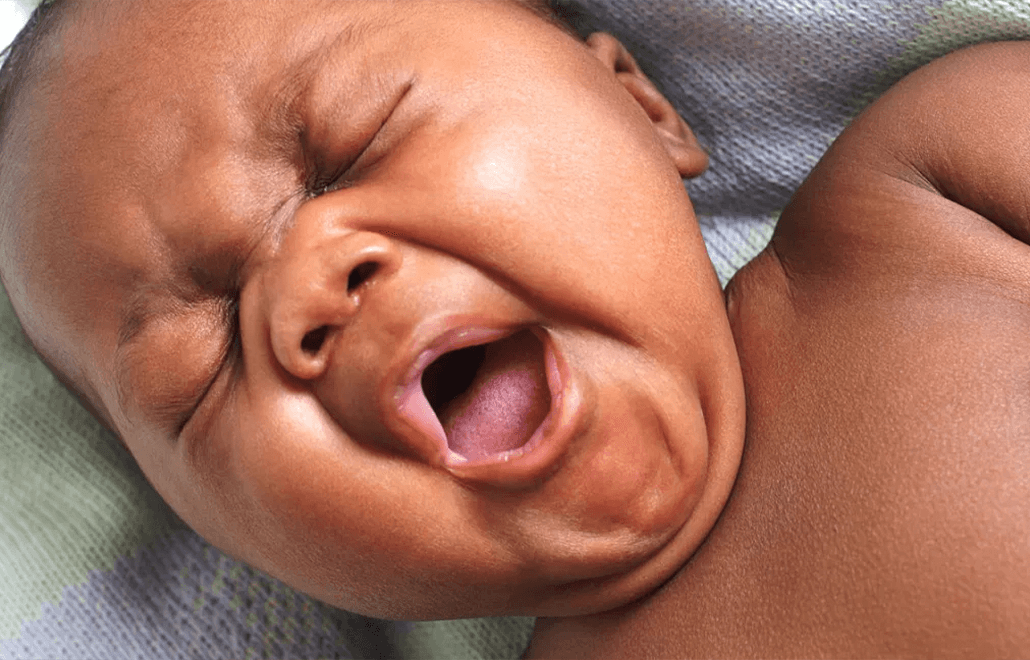
27 Oct Types of Diaper Rashes
4 min. readAs a parent, you’ve likely seen your little one experiencing a diaper rash. There are several different types, and we are going to break them down here so you can best determine which type your little one has and what you can do as mom and dad to help treat it and prevent it from happening again in the future.
Most Common Types of Diaper Rashes
Irritant dermatitis
Irritant dermatitis is the most common cause of diaper rashes. This is contact dermatitis, meaning the skin becomes irritated by another substance. For babies, this is often the result of skin being irritated by urine and feces. Your baby’s skin will likely look red and shiny and may even be warm to the touch. Usually, the rash is seen on the baby’s buttocks, thighs, belly, and waist. For the most part, it is not seen in a baby’s skin folds or creases, like the groin.
Sometimes the cause of this type of rash could be related to the baby’s food because some foods may make the baby’s feces more acidic than others. This is also true for breastfeeding babies and so sometimes mom may need to monitor her diet as well to see if there is any specific trigger for the rash.
Candida dermatitis
This type of diaper rash is caused by the growth of yeast and so sometimes you may simply hear it referred to as a yeast rash. This diaper rash is found in a baby’s skin folds and creases. The rash usually appears as a red patch or plaque outside of the diaper area. The yeast causing this rash is the same yeast that causes thrush so also check the baby’s mouth for signs of thrush. If you have additional questions about thrush see our post here (Does my baby have thrush?). Keep in mind babies can be more prone to this type of diaper rash if they have recently taken an antibiotic.
Allergic dermatitis
Although not as common, sometimes babies experience allergic dermatitis. This rash is due to something in the wipes and/or diapers the baby wears or possibly because of a lotion or cream used on the baby’s skin. This is more common for babies who have sensitive skin. The rash will be red and shiny. It may take a while to develop so you may not notice it for a few weeks. Once you have identified the cause of the rash and eliminated that product it may still take 1-2 more weeks for the rash to resolve. With this type of rash, it is important to note that it will develop anywhere the product that is causing the irritation touches, so the area could be quite big.
Bacterial dermatitis
On occasion, a baby may have a skin infection. When this is the case, they may develop a diaper rash because of the infection. The most common causes of bacterial dermatitis are strep and staph. Bacterial dermatitis caused by strep often causes bright, red skin around the baby’s anus. On the other hand, if it is caused by staph, you may see a red base to the rash but also pus-filled bumps or if the bumps have opened you may notice yellowish crusting. This type of rash needs to be evaluated by your baby’s pediatrician who will determine the most appropriate treatment options.
Treatment
Treatment for diaper rashes does depend on the type of rash your baby is experiencing but some things are good for all rashes. First, make sure the baby’s skin is cleaned and dried well, and do this often. Make sure to change diapers soon after becoming wet or soiled. Also, apply a barrier cream for the baby to help keep extra moisture off the skin. In addition, you can allow for some diaper-free time for increased air exposure to the skin. If simple home treatments like these are not effective and the rash continues, be sure to contact your pediatrician to see if additional treatment is needed. A mild steroid cream such as hydrocortisone may be needed and can be very helpful for the baby. Likewise, if it is a yeast rash, an antifungal will quickly help to clear the rash up and if bacterial, an antibiotic will be beneficial for the baby. The easiest solution for allergic dermatitis is to remove that particular product from the home and part of the baby’s care. Sometimes it can take a little while to know what the allergen is so try your hardest to be patient and use the skincare techniques and cleaning previously mentioned while phasing out old products.
Prevention
Prevention is the key to diaper rash management whenever possible. Prevention techniques include some things we’ve previously talked about with treatment like changing diapers often, cleaning and drying baby’s skin thoroughly, allowing skin some airtime (diaper-free time), and using diaper ointment or a general barrier cream routinely. Also, make sure to not overtighten the baby’s diapers as this can increase the chances of a rash developing.
Final Thoughts
Try to incorporate prevention measures as much as you can into the baby’s daily routine and diaper changes. If you notice a rash, immediately begin basic home treatments, and continue to monitor. If you have any questions about the rash or feel it’s not healing as quickly as it should always make sure to call your pediatrician’s office. Rashes are common and your pediatrician and the nursing staff are always happy to talk through any concerns with you and determine if an office visit or additional medical treatment is needed.

